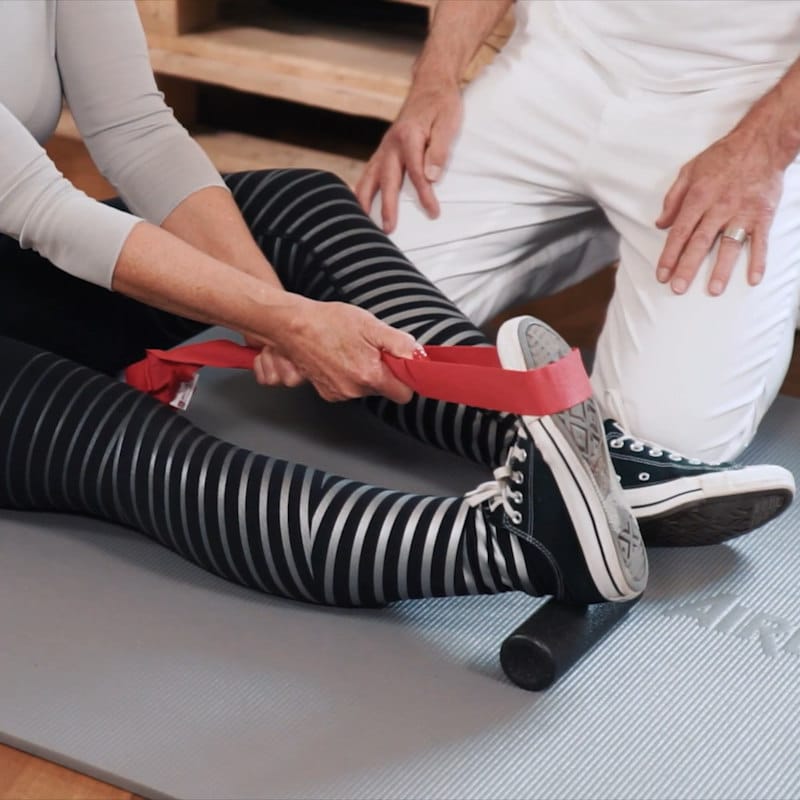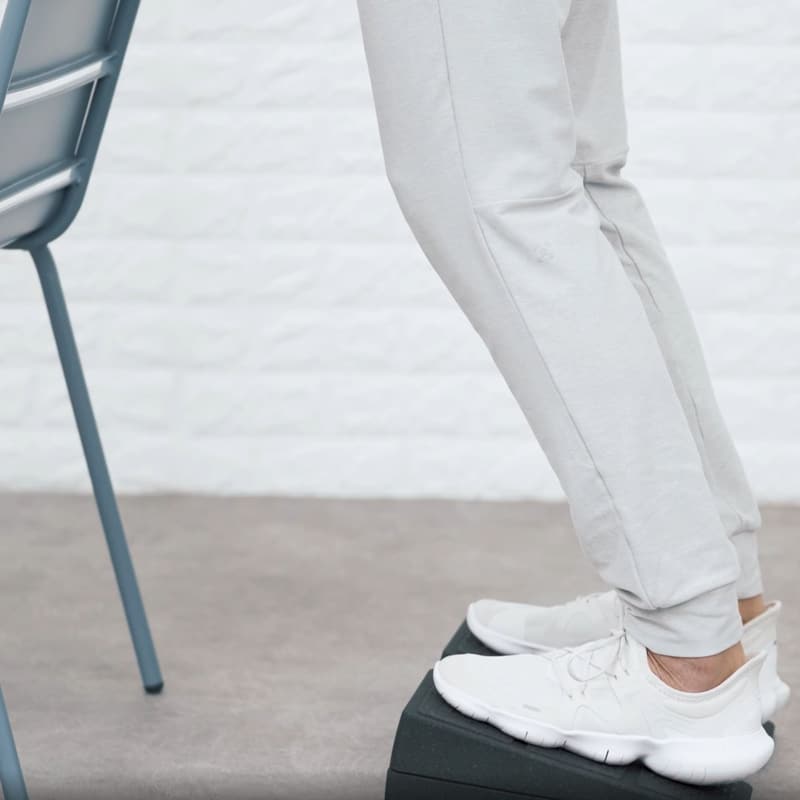patellar tendon exercises (Jumper’s Knee)
Body Part:
Knee
Equipment:
Knee Hero, Mini Foam Roller, Stretching Strap
Level:
Beginner
Body Part:
Knee
Equipment:
Knee Hero, Mini Foam Roller, Stretching Strap
Level:
Beginner
If you are experiencing knee pain when you run, jump, or walk, you may have patellar tendonitis, or what’s also called jumper’s knee. Patellar tendonitis occurs when the patellar tendon becomes inflamed.
The patella — most of us just call it our kneecap — is joined to our shin bone by the patellar tendon. Even though it’s called the patellar tendon, it’s actually a ligament. Tendons connect muscles to bones, ligaments connect bones to other bones. The patellar tendon stabilises our knee and facilitates movement. Without it, we wouldn’t be able to move our knees.
Patellar tendonitis can be a real pain in the… knee. Although anyone can get patellar tendonitis, it’s most common among athletes, especially professional volleyball and basketball players and those who exercise frequently and intensely.
Sports or exercises that require repeated jumping, sprinting, or squatting motions can cause patellar tendonitis. These activities can strain and overwork the knee joint. Tiny tears begin to appear that inflame, swell, and weaken the patellar tendon. If patellar tendonitis isn’t treated, it can lead to the tendon tearing.
You may be at risk for patellar tendonitis if:
Additional risk factors are: you have tight muscles (especially the quadriceps muscles or thigh muscles) or one of your legs is stronger than the other.
The most common signs of patellar tendonitis are pain, tenderness, or a burning sensation around the bottom of your kneecap. The pain can range from mild to severe. You may experience pain in your kneecap when you run, jump, walk, bend or straighten your leg. Squatting, kneeling, or going up the stairs may be particularly painful.
At the onset of patellar tendonitis, you may only experience pain irregularly, usually after physical activity. The more tears appear in the tendon, the worse the pain will get.
We’ve developed patellar tendon exercises that can help alleviate that burning sensation behind your knee. Our patellar tendon exercises only take 5 minutes, and all you need is our Knee Hero, Stretching Strap, and Mini Foam Roller. Take a look below for our easy-to-follow instructions on how to perform our patellar tendon exercises.
Buy the Knee Hero,Stretching Strap, Mini Foam Roller and discover more pain-relieving tools in our online shop.
Take me to the shop.
For this exercise, you’ll need our Stretching Strap and Mini Foam Roller.

For this exercise, you’ll need our Knee Hero and a chair.
Getting on a regular routine can help banish the burn. Perform our patellar tendonitis exercises once a day, six days a week, for a four-week sprint. When your patellar tendon pain starts to subside, adjust the frequency of your routine as you see fit.

Sign up for our free newsletter and discover how to manage your pain yourself. Every two weeks, we’ll deliver follow-along videos and articles to your inbox.